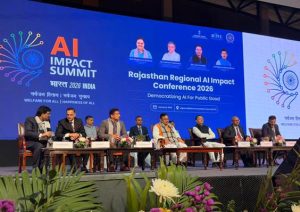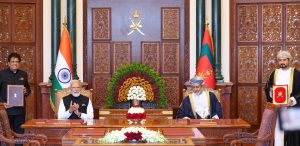India’s Semiconductor Drive: PM Modi Says Smallest Chip to Power Big Change
Photo Credit: PIB
Prime Minister Narendra Modi inaugurated the Semicon India 2025 conference in New Delhi, declaring that the world is ready to build the semiconductor future with India. He emphasized that even the smallest chip designed in India will soon drive some of the biggest changes globally.
Addressing the gathering, PM Modi compared chips to “digital diamonds,” highlighting their growing importance in today’s world, much like oil shaped the 20th century. He said India’s semiconductor efforts go beyond manufacturing, aiming to build a complete ecosystem that will make the nation globally competitive and self-reliant. “India is now moving beyond the backend to become a full-stack semiconductor nation,” he said.
The Prime Minister underscored India’s strong economic growth, noting that the country registered 7.8% GDP growth in the first quarter of the year, with progress visible across sectors. He added that the global semiconductor market, currently worth about $600 billion, is expected to surpass $1 trillion by 2030, and India will play a significant role in this transformation.
The three-day summit, scheduled from September 2 to 4, is hosting over 20,750 attendees, with 2,500 overseas delegates from 48 nations, 150 speakers, and more than 350 exhibitors. The event comes shortly after PM Modi’s visit to Tokyo Electron Miyagi Ltd in Japan, where he highlighted opportunities for India-Japan cooperation in the semiconductor space.
India’s semiconductor industry, which was worth around $38 billion in 2023, has expanded to an estimated $45–50 billion in 2024–25. Industry estimates suggest it will more than double, reaching $100–110 billion by 2030. With Taiwan currently producing over 60% of the world’s chips and nearly 90% of the most advanced ones, major economies like the U.S., EU, Japan, and South Korea are working to diversify supply chains. India’s expanding role ensures it will claim a larger share of the trillion-dollar global market.
Source: PIB




